WILD HORSE CONSERVATION & MANAGEMENT IN THE WORLD
REMOVAL OR REWILDING?
by Elena Bajona
For a long time, this question has been knocking on my head: why wild horses in the US are still being removed from the range and in Europe instead they have been reintroduced into the wild and are part of some important rewilding projects?
After studying horses in the wild for many years I had the chance to watch the rounds up happening in the USA. Since then, I suddenly decided to help and change my life accordingly; instead of helping people with horses I took the field to help horses. I wanted to give my contribution to save them from their uncertain future.
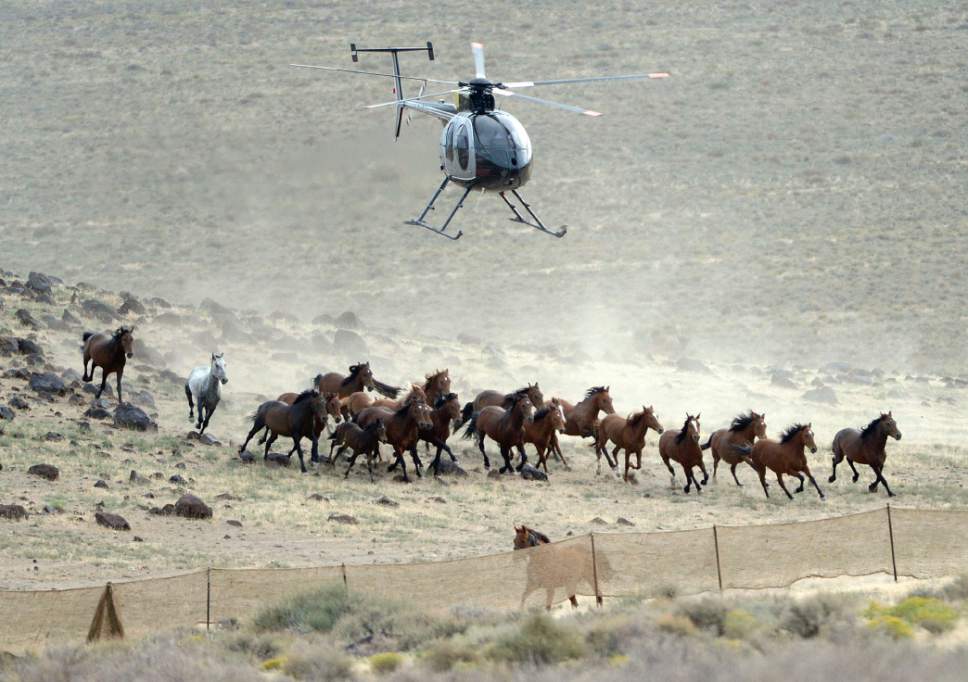 Working for some important projects of wild horse conservation and protection in the US I have witnessed how hard life is for them. Wild horses in the USA are struggling to survive free and still nowadays thousands and thousands of them are rounded up every year. They are captured and kept in long term facilities for a long period, like blameless prisoners.
Working for some important projects of wild horse conservation and protection in the US I have witnessed how hard life is for them. Wild horses in the USA are struggling to survive free and still nowadays thousands and thousands of them are rounded up every year. They are captured and kept in long term facilities for a long period, like blameless prisoners.
(Wacht the video of my 2019 visit at BLM Wild horse Corrals)
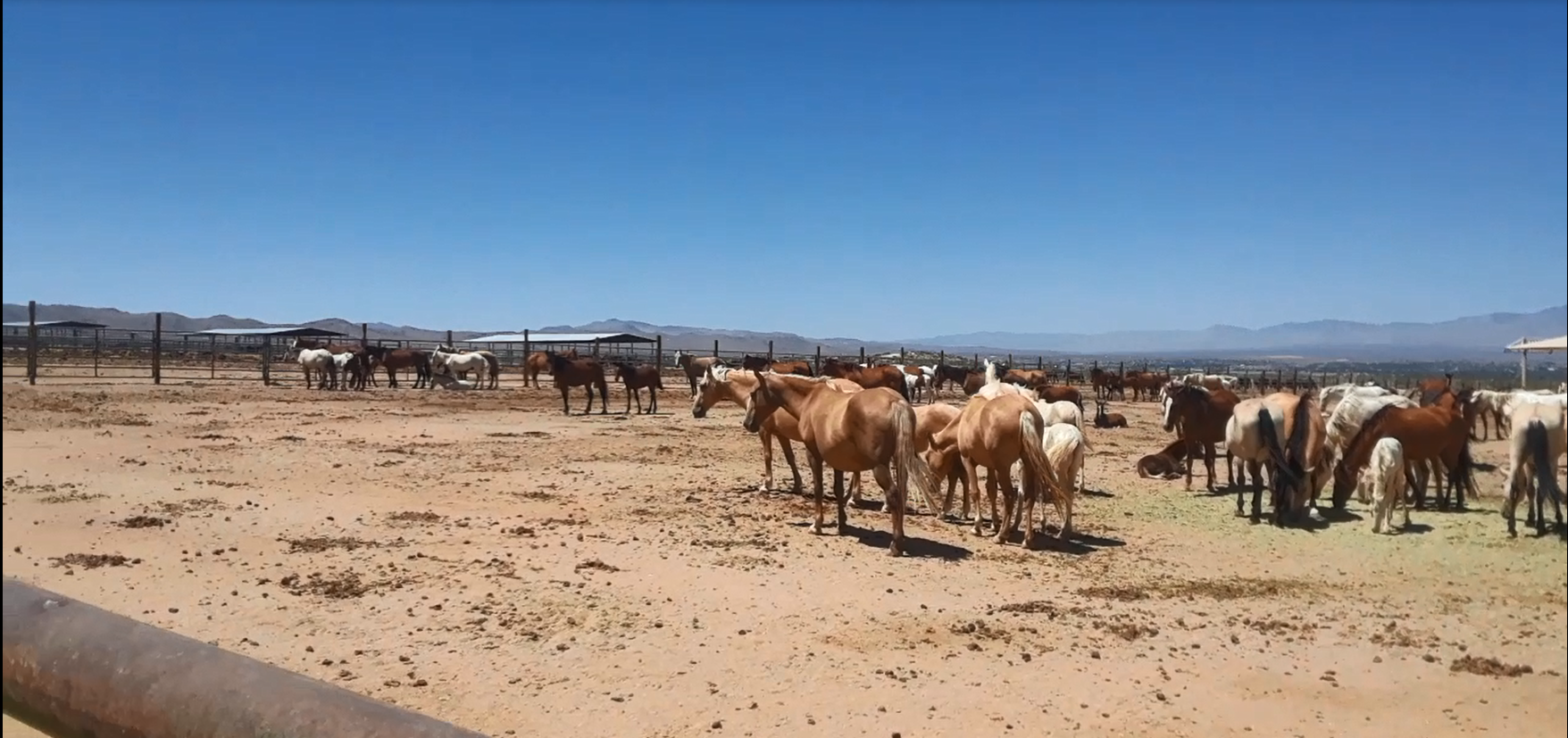
Visit at BLM Ridgecrest Wild horse Corrals – June 2019
I have personally experienced how difficult the situation is. Many and many efforts are made from different organizations, no profit and private, to save as many horses as possible and give them freedom again (or something similar to real freedom). Rescue them from the BLM prisons, rebuilding their families and give them a free life again is not an easy task. The most important and delicate thing to me is to care for them after they have lost their freedom. It is a huge responsibility. To see those highly social herd animals to lose their Spirit and live into confined areas conditioned by the daily feeding process is not easy. That broke my heart, after witnessing their life out in the range.
Wild horses as part of an ecosystem

Retuerta horses release, originating from Coto Donana National Park, Spain
All this is happening in the USA since long time, while in Europe huge efforts are made to reintroduce horses in the wild. Why?
Why is not possible to globally think of horses as part of ecosystems and manage them as wildlife animals playing an important role?
Do we need to reach the point where rewilding horses in the USA will be a necessity?
Rewilding is a process, combining both (epi) genetic and cultural changes and takes a lot of time! We need to be very careful to remove wild animals then! Interfere with nature brings always more negative issues than real help.
Wild horses did always play an important role in the ecosystems especially in grassland and semi-open forests. Removing or drastically reducing the numbers of key players in an ecosystem, as humans have done since the late Pleistocene, results, via trophic cascades, in a decreased biodiversity.
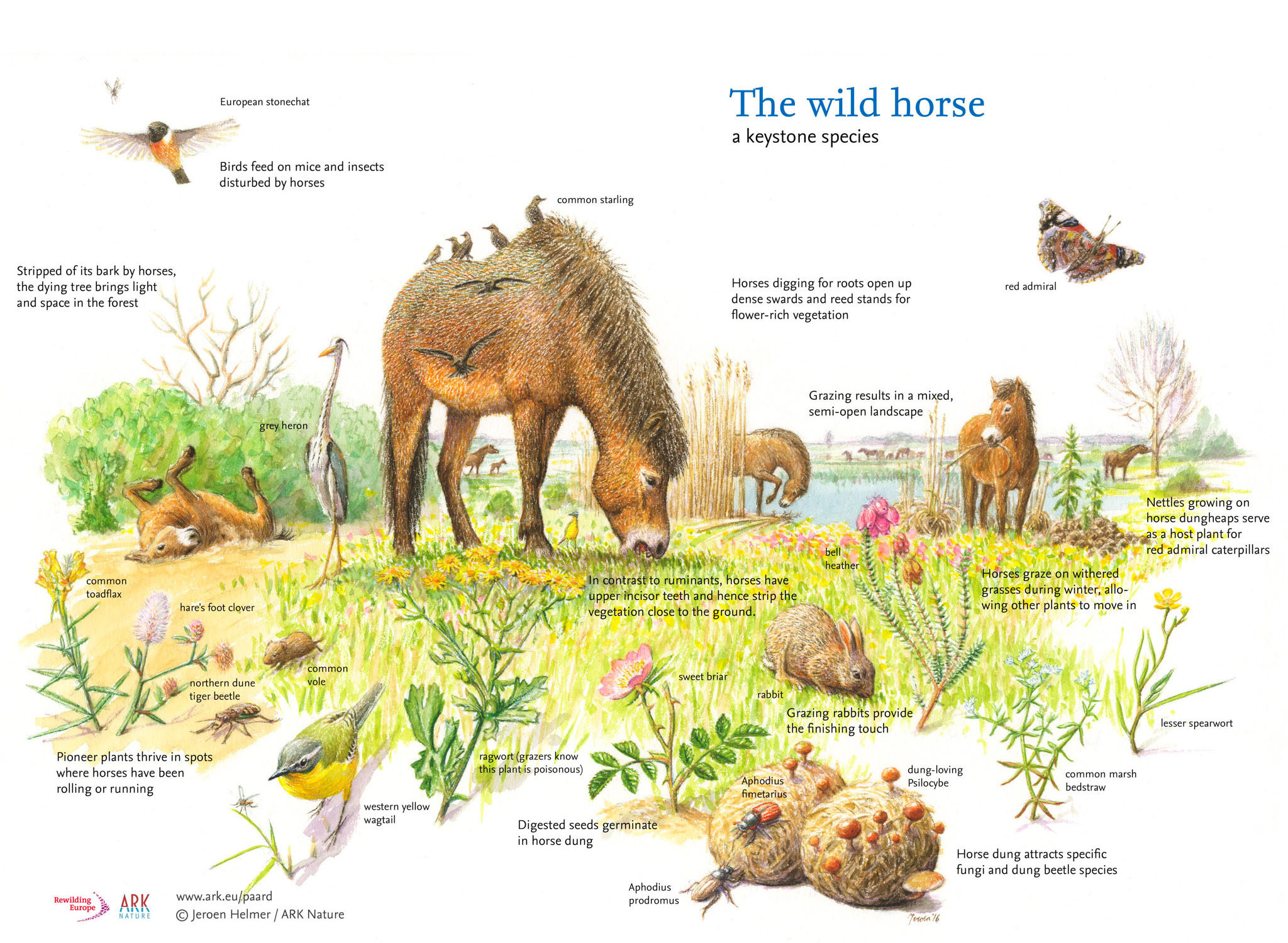
Horses are grazers and natural grazing by large wild herbivores can maintain or restore natural processes, such as floods and natural wild fires, and original biodiversity can reappear. Together with other mega-herbivores they can revitalize the natural process of grazing, browsing and debarking. At the same time natural processes such as wallowing, treading, transporting seeds are restored as well. While grazing and walking they mix soil, dung and dead plant material, stimulating recycling of nutrients. In their coats, seeds are transported and their preference for roots and bulbs of reeds, grasses and sedges opens up monotone stands of these species, enabling herbs to colonize the area. In many of these aspects, horses are quite unique and seriously complement other large herbivores.
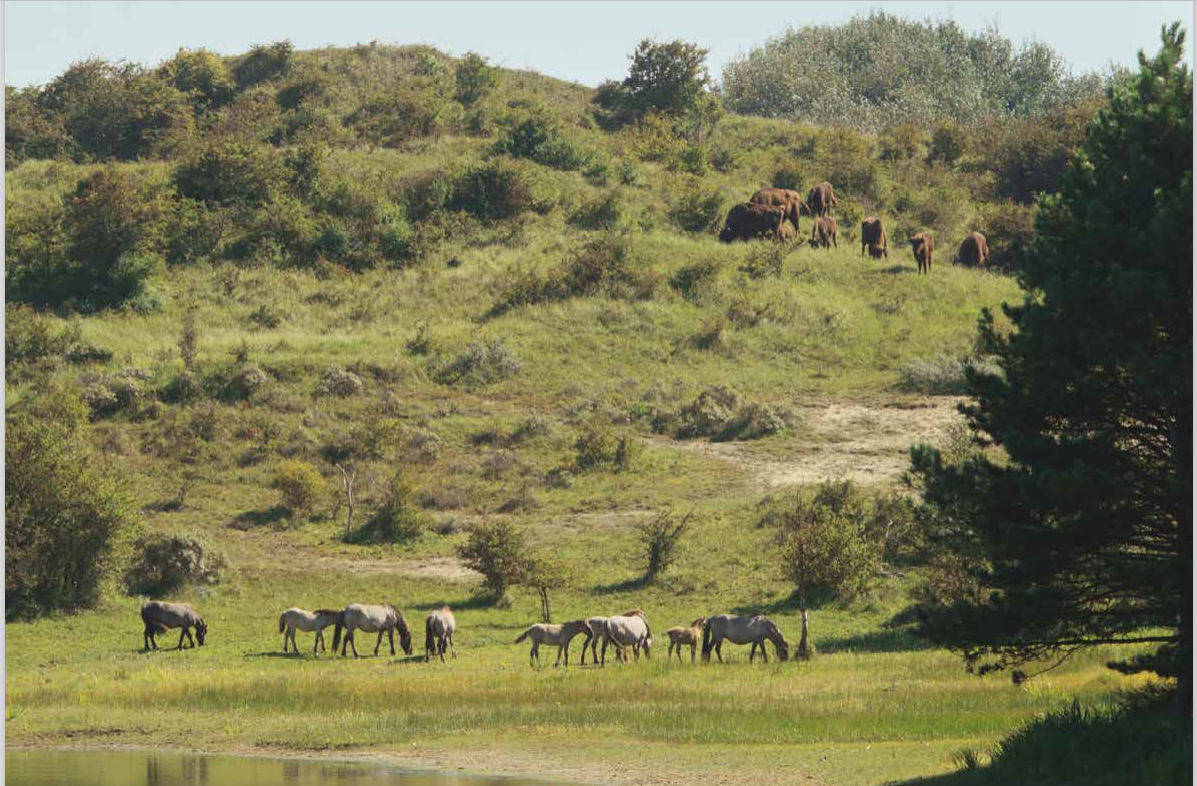
Konik horses with bisons in Kraansvlak, The Netherlands
Horses are not ruminants, like cattle, and have difficulties digesting cellulose. Wild horses prefer to graze on short freshly grown meadows, on which the cellulose cells have not fully developed. They benefit from the protein rich regrowth of grasses already grazed by other herbivores, thus creating typical short grazed horse meadows. That is why it is very important, according to me, to consider and value the interactions between species on the same territory. Different habits and feeding strategies generally lead to different species using different biotopes. However, there is overlap in habitat use. Sometimes this leads to competition for the same resources, but usually there is facilitation, where one species creates the right circumstances for another. For example, bison or cattle graze on longer grasses, creating the right circumstances for wild horses, which in their turn create better circumstances for rabbits or geese.
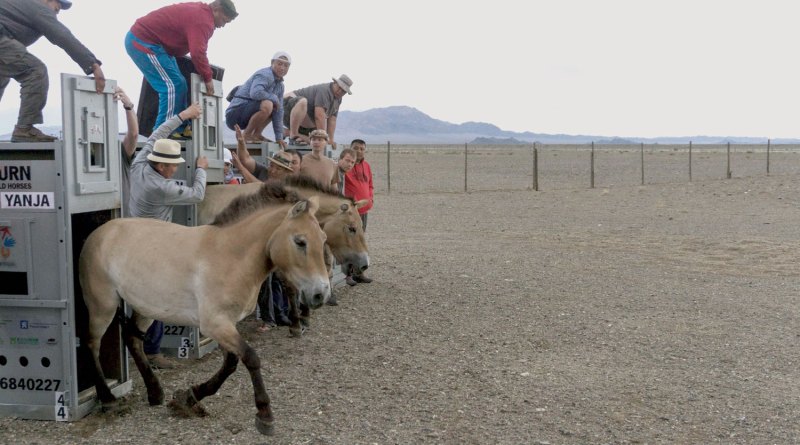
Przewalski’s horses reintroduction – Mongolia
For example, the re-introduction of Przewalski horses in Mongolia created the right circumstances for red deer to re-colonize the area naturally. Dam building beavers create new ponds, attracting elk and deer, and when a dam collapses, the pond drains, attracting wild cattle. Natural grazing does not mean reintroducing just one species. The process of natural grazing is about all species.
Why wild horses became extinct in Europe?
We always have to remember that before humans forged partnerships with horses, the interactions were those of predator versus prey. They were a main food supply for humans. 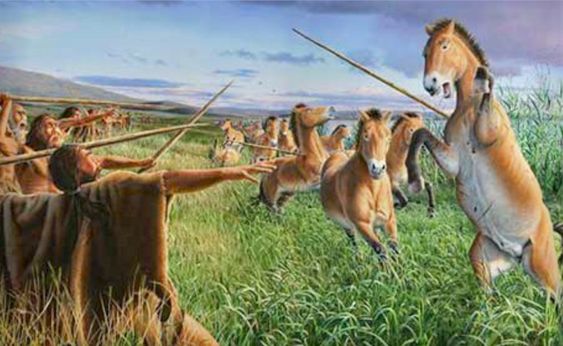 Ice Age hunters in Europe, Asia, and North America tracked and even drove horses, dispatched them with spears, and butchered them for food. In France and Spain, lively images of the forebears of our domesticated horse adorn the cave sanctuaries of early hunters, dating from late Ice Age times, some 12,000 to 30,000 years ago. Many prehistoric campsites contain evidence that horse meat was a main food source. Also during pre-agricultural times, semi-open ecosystems were supported not by human livestock, but by huge numbers of wildlife. Species like auroch, wild horse, European bison, saiga, wild ass and deer, all had their own unique impact on their surroundings. With human encroachment, wild horses and aurochs were in fierce competition with humans. They lived in exactly the same place where humans wanted to keep their livestock or grow their crops, and so wild horses and aurochs were either domesticated or exterminated.
Ice Age hunters in Europe, Asia, and North America tracked and even drove horses, dispatched them with spears, and butchered them for food. In France and Spain, lively images of the forebears of our domesticated horse adorn the cave sanctuaries of early hunters, dating from late Ice Age times, some 12,000 to 30,000 years ago. Many prehistoric campsites contain evidence that horse meat was a main food source. Also during pre-agricultural times, semi-open ecosystems were supported not by human livestock, but by huge numbers of wildlife. Species like auroch, wild horse, European bison, saiga, wild ass and deer, all had their own unique impact on their surroundings. With human encroachment, wild horses and aurochs were in fierce competition with humans. They lived in exactly the same place where humans wanted to keep their livestock or grow their crops, and so wild horses and aurochs were either domesticated or exterminated.
Wild horses in Europe are now reintroduced in the Danube Delta, in the Rhodope Mountains of Bulgaria, in the Velebit Mountains of Croatia and in Western Iberia. In Italy we are working on two wild/feral horses’ sites that need protection from removals or wrong management actions (one in Liguria and one in Tuscany).
In the USA instead wild horses are removed constantly every year. Will USA arrive to a point where they will need to reintroduce the wild horse as an important grazer of the plains? Or will it be too late?
A compromise solution can be the turn of the screw. But first we need to have the mindset that coexistence between different species (human included) is possible. Human intervention has to be minimal without culling or removal. This will keep biodiversity boost and wildlife population stabilize. Furthermore, to rebuild and protect an ecosystem where wild horses are part of it can be an opportunity to create or enrich eco-tourism sites. From the eco-tourism point of view, it is far more attractive to look at rewilded horses and cattle with all their natural social behavior, than domestic livestock.
With those two main focus in mind, conservation and rewilding are the solution. Both are feasable but only with a strategic and professional management that keep balance in the ecosystem.
Stay Wild, Stat Smart!
Elena Bajona
January 15th, 2021
#wildhorses #wildhorseconservation #rewildinghorses #wildlife #ecosystem #wildhorsewatching #ecotourism #biodiversity

